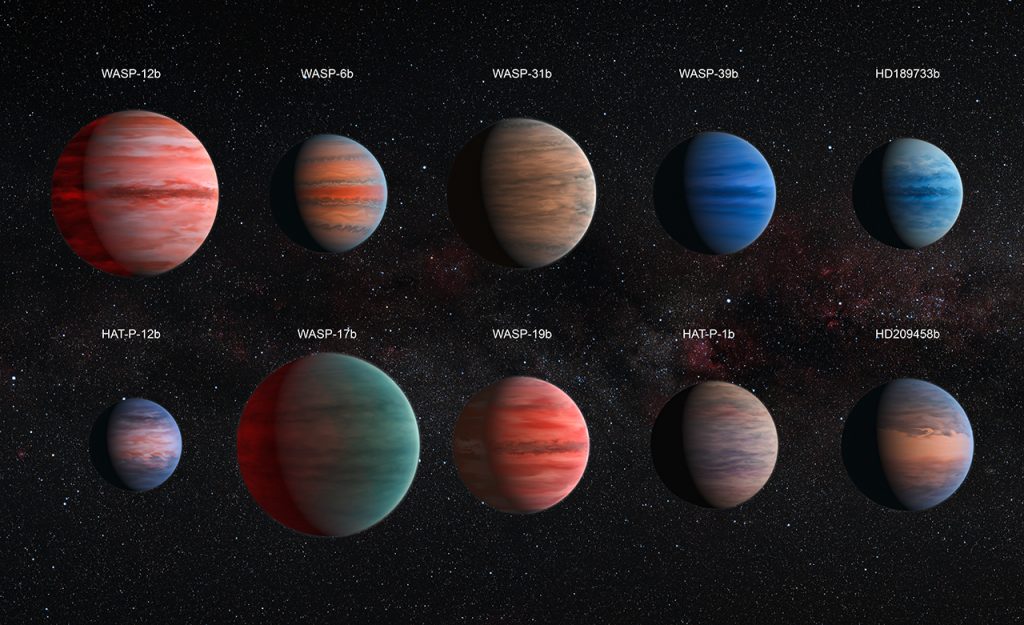Exoplanet Activity
Faculty members with primary research interests in exoplanets are Prof. David Sing and Prof. Kevin Schlaufman. The exoplanet research program at JHU features close collaborations (including joint appointments) with JHU’s Department of Earth and Planetary Sciences, its Applied Physics Laboratory, and the Space Telescope Science Institute. The overall Baltimore exoplanet effort is brought together in the interdisciplinary Institute for Planets and Life and the Stargate Collaboration. The Baltimore exoplanet community meets jointly with researchers from the greater Chesapeake Bay Area several times per year in Chesapeake Bay Area Exoplanet Meetings.
Below we describe some of our department’s exoplanet research.
Exoplanet Atmospheres
Prof. David Sing has research interests in detecting and characterizing exoplanets, constraining the physics and chemistry of their atmospheres, and performing comparative exoplanetary studies. The research involves both observations and theoretical spectral retrieval modeling. The observations primarily use the transit method using telescopes such as the Hubble Space Telescope and James Webb Space Telescope to make transmission, emission, and phase curve panchromatic measurements for planets from super-Earth to Neptune and Jupiter sizes. Prof. Sing is P.I. of the largest exoplanet program in history on the Hubble Space Telescope, the Panchromatic Comparative Exoplanetary Treasury Survey, which used 498 orbits to study 20 planets from UV to near-IR wavelengths. Highlights of the program include:
- the first spectroscopically identified stratosphere,
- heavy metals escaping from a planet’s atmosphere,
- a Neptune size planet actively boiling off it’s entire atmosphere, and
- the yellow sky exoplanet.
Prof. Sing is also an active member of the JWST ERS-Transit Program which is a community effort to observe the full suite of transiting planet characterization geometries with the James Webb Space Telescope, and a member of the JWST NIRSpec GTO Team.

Exoplanet Formation and Evolution
As part of JHU’s Institute for Data-intensive Engineering and Science, Prof. Kevin Schlaufman uses all of the tools of a 21st century data scientist to study the ensemble properties of exoplanets and their host stars with the goal of using those properties to explore exoplanet formation and evolution. Recent publications by JHU PhD students mentored by Prof. Schlaufman include:
- The use of exoplanet host star Galactic kinematics to solve the second oldest open question in exoplanets (Hamer & Schlaufman 2019).
- The use of the relationship between small planet occurrence and host star metallicity to choose between planetesimal accretion and pebble accretion for the origin of planetary embryos (Lu et al. 2020).
